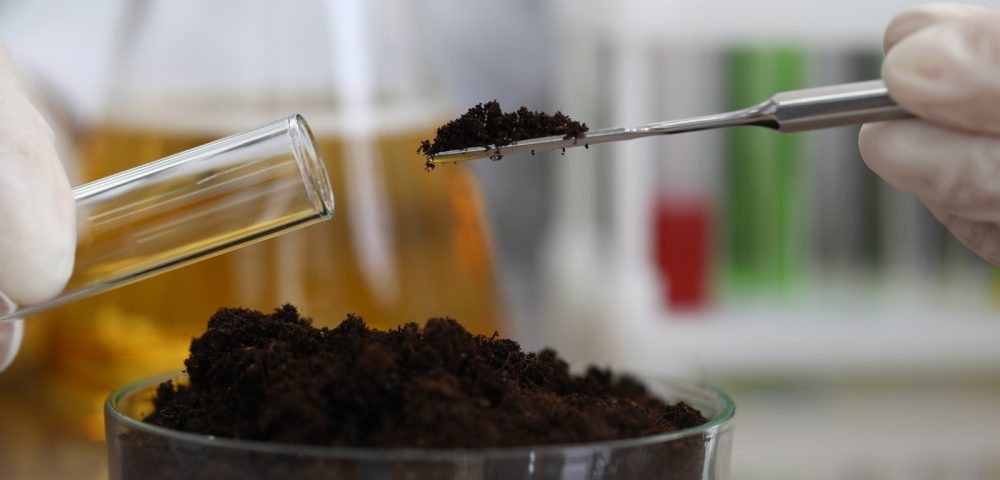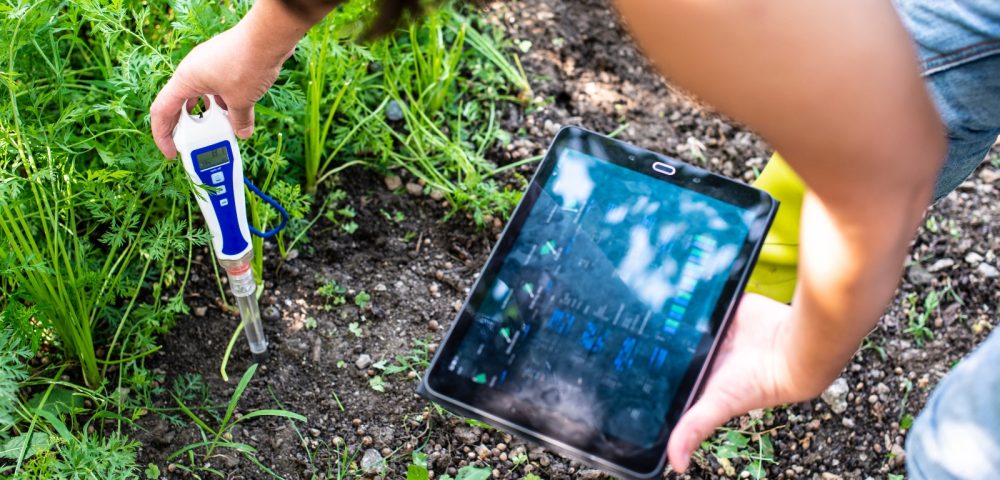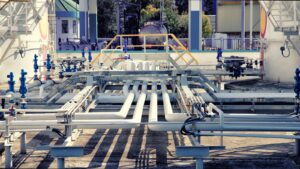Every towering skyscraper, solid bridge, or stable road begins with a simple yet overlooked test hidden deep beneath your feet. While engineers obsess over blueprints and concrete mixes, the real story starts with something much less visible but far more telling. Why do certain roads crack faster than others? Why do some foundations hold for decades while others sink? The answers lie in how well the soil below holds up under pressure. But how do professionals measure this hidden strength? What secrets does the earth reveal when put to the test? The answer lies in the ‘Soil Compaction Test’.
In this article, we cover everything about it deeply.
What Is Soil Compaction?

- The latter is a complex process where the air comes out of the soil pores due to heavy pressure draining itself from water and air. This makes the way for the soil particles to function much tightly as there are no hidden spaces. This way, the soil becomes much solid and dense and suitable to bear weight on its surface.
- The key benefit of this process is that it takes out the empty spaces within the particles. When heavy structures like buildings, bridges, and water pipes are built, the soil can easily bear the heavy load as it has the necessary strength and flexibility for constant pressure. Constructors have to utilise different equipment for soil compaction, such as rollers and tampers, as they make the soil pretty steady.
- If you wonder why it is needed in the first place, soil itself is not completely prepared to bear any sort of strength. This is where the constructors get involved in increasing its shear strength to tolerate much heavier toll. This way, the soil will not slide or break apart due to weight.
- However, since the soil grains are tight, water cannot pass through them easily, and this will affect their permeability at a greater level.
- Soil compaction is the key to great constructions, yet it has another side as well. If the authorities do not plan it well, the said process can cause runoff or drainage issues while the soil eventually becomes less squishy and compressible.
Why Perform a Soil Compaction Test?

This is why the builders usually target at least 95% of the maximum dry density of the soil. They execute these experiments in a lab, and the end observations simply show that the soil on which they operate can hold buildings, roads, or pipelines without moving or sinking.
It is nearly difficulty to determine whether soil is acceptable for construction without doing a laboratory test. This means even if the surface looks solid, the underneath would be problematic and shrinkable.
With time, the negative impacts of not conducting a soil compaction test will pop up when the uneven settlements, cracked foundations, etc, occur. This will affect the alignments of the underground pipelines, and the same is the main reason for pavements getting cracked easily.
If the builders look beyond what they actually see on the surface and conduct the soil testing, they can predict the ground’s behaviour under different circumstances. It is indeed easy to either get prepared or take necessary actions to fix them.
Methods of Soil Compaction Testing

Standard Proctor Test (ASTM D698 / AASHTO T99)
This test can only be done by experts inside a laboratory. The main purpose of the test is to understand how much moisture soil needs to reach its highest dry density.
In this method, they place a measured amount of soil into a metal mould in three layers. They compact each layer using a standard 2.5-kilogram hammer dropped from a height of 30 centimetres, striking the soil 25 times per layer.
After this process, they remove the soil and dry it. Then only can they calculate its dry density. Not limited to one time, the technicians repeat this process a few times using various moisture contents. At the end, it will come up with a curve that indicates the suitable moisture level for maximum compaction. The constructors examine the curve and understand how they are supposed to prepare soil systematically on their sites.
It is better not to consider this solely as lab work. It requires a significant level of fieldwork to get this test done properly from A to Z.
Modified Proctor Test (ASTM D1557 / AASHTO T180)
The speciality of this test is that it is suitable for the projects that carry an immense level of weight, such as highways, bridges or runways. With this particular testing, the engineers can inspect how soil behaves under higher compaction energy.
This method works similarly to the Standard Proctor Test, but it applies more force to simulate real-world conditions better. Technicians fill a mould with soil in five layers and compact each layer using a 4.5-kilogram hammer dropped from 45 centimetres, with 25 blows per layer.
After finishing the process, they dry the soil and calculate the dry density. Like the Standard Proctor, they test different moisture levels to build a curve showing the optimum moisture content. However, because of the extra force, the modified proctor usually produces higher dry densities.
This test helps engineers decide how much compaction effort the field teams need to apply, especially in areas where durability really matters.
Nuclear Density Gauge
It offers a fast and non-destructive way to check soil compaction right at the job site.
This is how the testing process works: Technicians deploy a small radioactive source to send particles through the soil, which they are testing. The device has a detector embedded in it which can check how many particles bounce back during the process. It makes a clear path for the engineers to calculate the soil’s density and moisture content levels.
They usually place the gauge on the surface of the ground or insert it into a small hole to calculate this. There is no need to keep waiting for the results, as they can get the readings instantly.
They can make real-time decisions and fix compaction issues right away.
Sand Cone Method
This checks how dense the soil is by using a simple setup involving sand, a cone, and a hole in the ground.
First, workers dig a small hole in the compacted soil and collect the soil they remove. Then, they place a jar filled with dry, uniform sand on top of the hole using an inverted cone device. The sand flows into the hole, filling the space left behind.
After the hole is filled, what they do is weigh the remaining sand in the jar. This shows how much sand went in. Now that they know the density of the sand, the remaining work is to calculate the volume of the hole.
Then the technicians can compare the weight of the removed soil with the hole’s volume. This way, they get the final result, which is the soil density of the particular place.
Since it does not require any specific or advanced tools, this would be suitable for remote locations.
Dynamic Cone Penetrometer (DCP)
The DCP checks how strong and compact soil layers are beneath the surface.
Workers drive a metal cone into the ground using a sliding hammer that falls from a set height.
They can check the cone’s penetration depth with each drop they make. The formula is quite simple: When the compacted soil is soft and loose, the cone sinks more and more. However, when the compaction is done properly, the soil will resist this.
The bright side of this test is that it requires no particular machines or electricity.
It works especially well for checking road subgrades, trenches, or fill areas where uniform compaction matters. As the test gives quick results, inspectors can spot weak zones on the spot and decide if they need to recompact the area.
Drive Cylinder Method
The Drive Cylinder Method checks soil compaction by removing a fixed amount of soil using a metal cylinder, then measuring its moisture and density.
Workers drive the cylinder straight into the ground to capture a sample of undisturbed soil. Once they extract the sample, they weigh it, dry it in an oven, and weigh it again to figure out how much water it holds.
From there, they calculate both the wet and dry density.
It is a requirement of the said test that it gathers a particular and measured volume of soil. This way, the technicians can have a better idea of the way soil actually lies in its natural condition. This is mainly best for situations like backfills, embankments, or any area after the soil has been compacted using machines.
It gives more direct results than some surface methods and does not rely on radiation or calibration tools.
Deeply Analysing Soil Compaction via Modern Technology

The soil you work on does not speak, but our AI-powered sensors listen. If you are still relying on old-school methods to measure compaction, your project risks sinking! Tigernix technology translates soil behaviour into actionable data, giving you full control from the ground up. Want smart soil insights that build stronger foundations? Connect with Tigernix.







